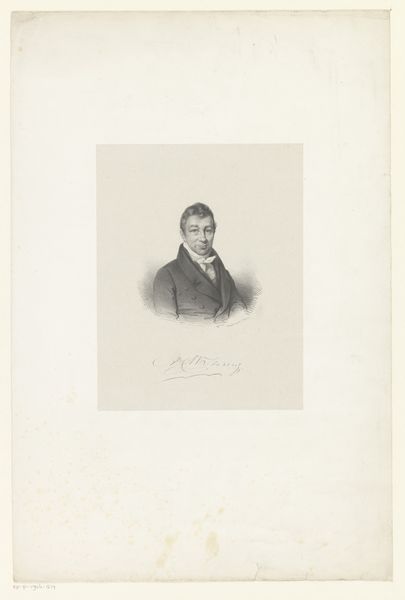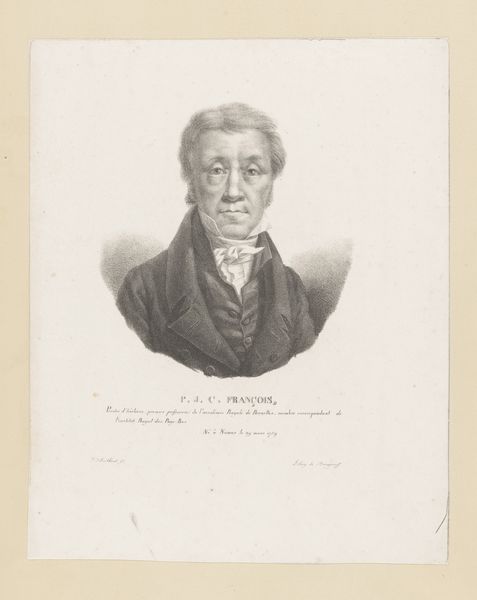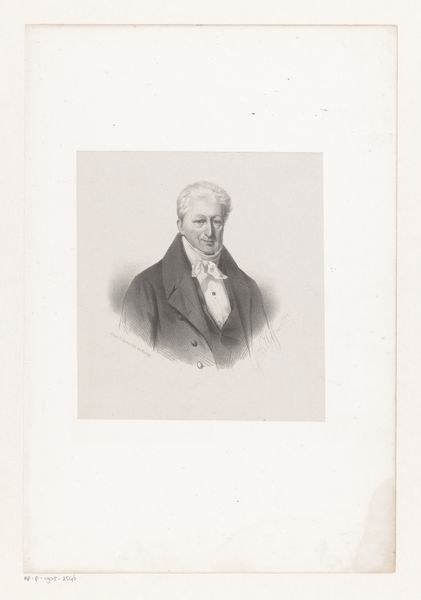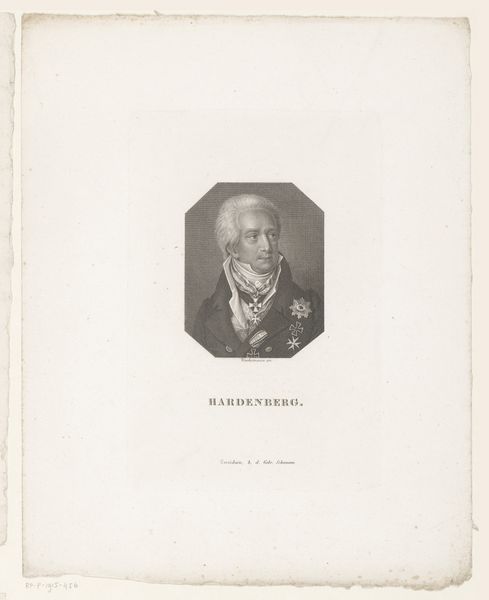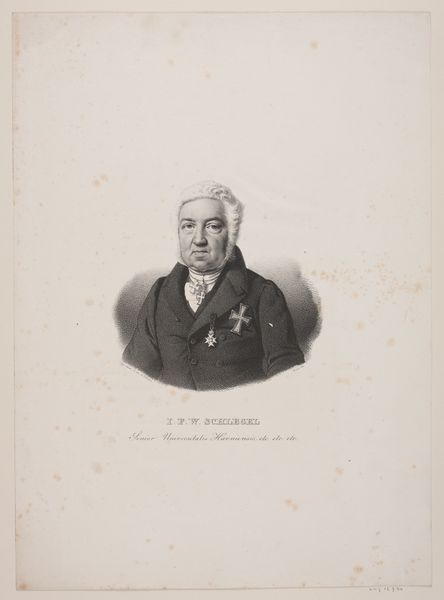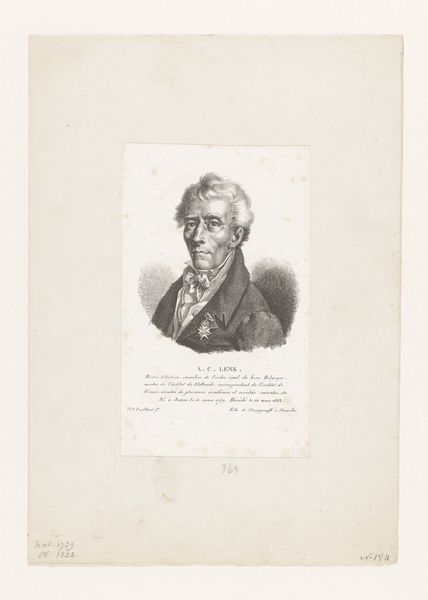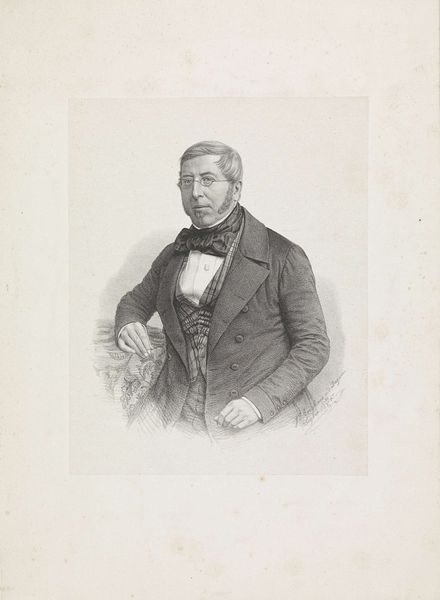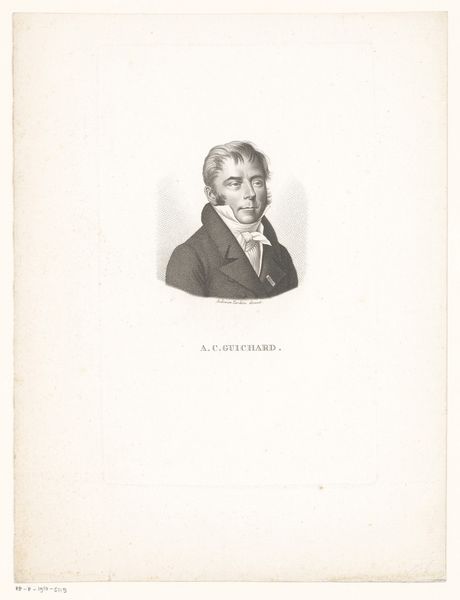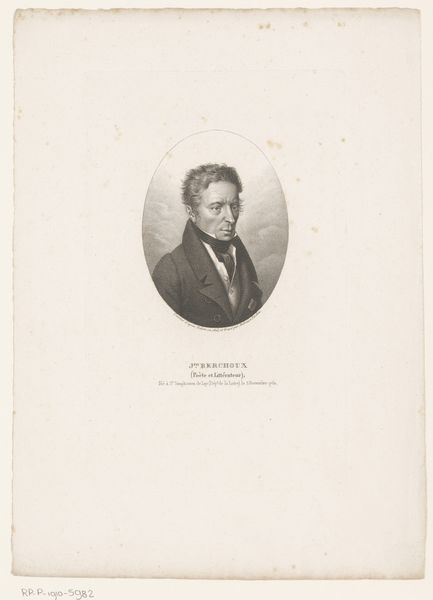
print, engraving
#
portrait
#
pencil drawn
#
neoclacissism
# print
#
pencil sketch
#
light coloured
#
old engraving style
#
pencil drawing
#
pencil work
#
engraving
Dimensions: height 550 mm, width 364 mm
Copyright: Rijks Museum: Open Domain
This is a portrait of Michiel Versteegh, made by Eugène Verboeckhoven, and rendered in lithography. This printmaking process involves working on a flat stone or metal plate, treating areas to retain ink while others repel it. The medium is critical here. Unlike painting, lithography enabled the relatively quick and inexpensive reproduction of images, serving a growing market in the 19th century. This was an era when the middle class was gaining economic and political power, and visual representations of the world around them was of importance. Consider the labor involved: the artist, the printer, and the distributor, all contributing to the portrait's accessibility. Lithography democratized image-making, breaking down traditional hierarchies between fine art and commercial production, and meeting the demands of a society hungry for visual information. So while this may seem like just a portrait, it's also a product of its time, deeply embedded in the socio-economic fabric of 19th-century Europe.
Comments
No comments
Be the first to comment and join the conversation on the ultimate creative platform.
